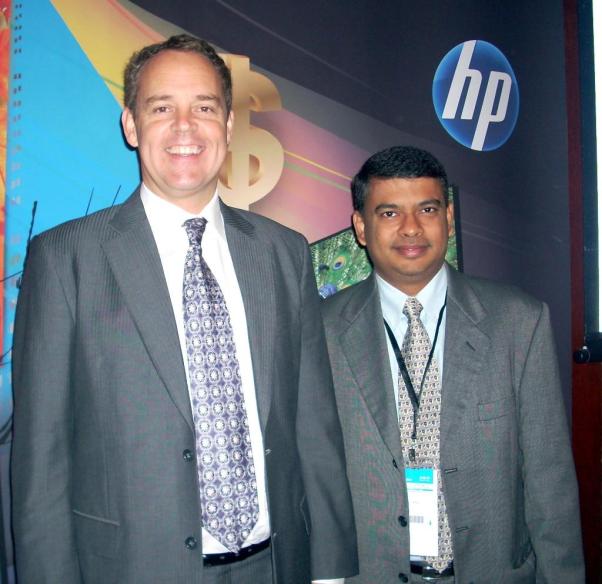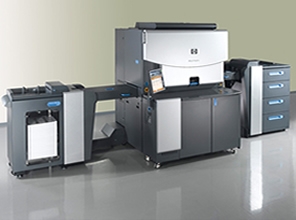
Journalists also sat in with more than 700 printers on sessions at an HP-InfoTrends seminar held concurrently in the Chinese capital, and viewed HP’s comprehensive stand at ChinaPrint 2009, with China’s 100,000 printers considered a burgeoning market for digital technology vendors.
Speaking to ProPrint, VS ‘Harry’ Hariharan (pictured, right), vice-president of HP’s graphic solutions business for the Asia Pacific and Japan, described Australia – along with India and South East Asia – as three key new markets for HP’s Latex inkjet technology, which the company announced before last year’s drupa.
The aqueous thermal inkjet formulation opens the doors to outdoor signage that previously was the domain of solvent inks, and also enables a resolution suitable for close-view collateral such as in-store POS.
Earlier in the event, Hariharan laid out HP’s strategy across five fronts.
The new HP Indigo WS6000 – which has twice the speed of its predecessor, the WS4400, and prints on a wider range of media – when integrated with HP’s new SmartStream workflow is cost-effective against flexo, said Hariharan.
In the signage field, HP’s DesignJet L65500 printer, which uses the Latex technology, has proved a hit with fleet graphics printers in India, while its FB950 flatbed UV-curable machine, developed from HP’s acquisition of US company Colorspan, has been making inroads into supersized décor graphics, and the FB7500, a high-volume UV machine, now prints on everything from paper to thick boards.
New third-party plug-ins are also becoming available for SmartStream Director, developed through HP’s OEM deal with Press-sense, which offers automation, management and customisation on tasks from job creation through to fulfilment, with VDP and online submission.
“Digital has expanded into the profit sector since 2005, and really pushes screen printing into a corner,” said Hariharan of the signage market.
HP has undertaken a bar-coding project for a Chinese regulator to upgrade the country’s PIATS (Product Identification, Authentication and Tracking System) to reduce product forgeries. Using HP’s C6180 China-specific thermal platform, PIATS will be upgraded from an 8-10 to a 20-digit barcode, with each box carrying its own unique serial number.
The DesignJet range will offer a click-charge consumables structure for volume customers, and a template poster-proofing solution aimed at in-house print centres.
At InfoTrends, HP Indigo vice-president Alon Bar-Shany tracked digital’s warp-speed acceptance since the new century. He spoke about the environmental benefits of on-demand printing, as opposed to old-style volume offset, with its inherent obsolescence and wastage. He said Indigo’s largest clients – including Procter & Gamble, which outsources its IT to HP – were now asking converters to produce labels digitally.
Chris Morgan (pictured, left), vice-president for imaging and graphic arts, told journalists that printers in the current economic crisis were looking to reduce operating costs and to go greener by switching from analogue printing to digital.
The media contingent visited a major digital print business in Beijing, where HP’s Indigo and inkjet technology were used extensively for last year’s Olympics signage, opening the doors to further lucrative contracts in this mass-market.
Two Australian companies were among winners in 11 categories of the Regional HP Digital Print Awards, in which the company recognises printers who have made the digital transition. Monday night’s awards gala banquet had a Beijing Olympics flavour, with a laser light show and drummers.
Supa Stik Labels and Labelling of Perth took out the Labels & Labelling award, and the company’s managing director, Don Holywell, was in Beijing to accept the accolade. NSW-based RFID ‘N Print won the Security Labels award.
Peter Kohn travelled to Beijing as a guest of HP.
Comment below to have your say on this story.
If you have a news story or tip-off, get in touch at editorial@sprinter.com.au.
Sign up to the Sprinter newsletter


